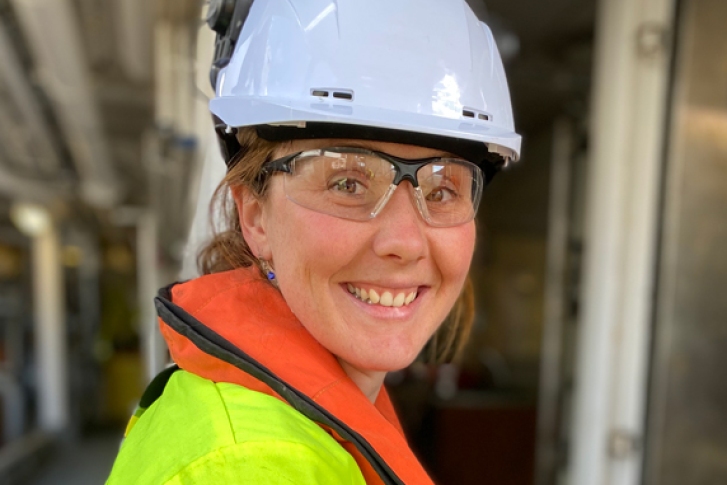Te Tai-o-Rēhua Tasman Sea tsunami voyage
Landslides happen in the ocean just like they happen on land. The issue is the underwater slope collapses can become an important risk for tsunami. Six large-scale slope collapse units (up to 4,000 km3) have been mapped offshore Taranaki-Waikato using 3D seismic data. However, we know very little about these complex processes, which substantially reduces reliability of hazard assessments and thus our preparedness. Acquisition of new marine geophysical and sedimentological data is critical to address this knowledge gap and expediate the comprehensive inclusion of submarine landslide-generated tsunami in future New Zealand tsunami hazard assessments.
Voyage background
The overarching aim of the proposed voyage is to progress our understanding of the link between submarine landslides and tsunami in the Tasman Sea. Submarine slope collapses are an increasingly recognised cause of tsunami globally, but our understanding is poor due to uncertain return intervals and complex landslide generation mechanisms, which substantially reduces reliability of hazard assessments and thus our preparedness. Six large-scale slope collapse units (up to 4,000 km3) have been mapped offshore Taranaki-Waikato using industry acquired 3D seismic data. The timing and controls of the slope collapses are poorly constrained. Current hypotheses link these slope collapses to tectonic development of the region (i.e., rapid uplift and erosion of the Southern Alps since c. 5 Ma), oceanic current action which delivered sediment to the area, and Quaternary sea level changes which impacted physical oceanography. Acquisition of new marine geophysical and sedimentological data is critical to address this knowledge gap and expediate the comprehensive inclusion of submarine landslide-generated tsunami in future New Zealand tsunami hazard assessments.
Overall science objective
The overall science objectives of the broader research programme (as part of the successful 2021 MBIE Endeavour Smart Ideas proposal “Te Tai-o-Rēhua Tasman Sea Tsunami”), are:
- Determine the causes, controls and likely timing of submarine slope failures in the eastern Tasman region.
- Evaluate the wave generation and coastal impact potential of the slope failures using numerical simulation.
- Validate paleo-tsunami evidence from the Tasman Sea coastline (Taranaki and Waikato regions) in partnership with iwi.
- Facilitate iwi and community engagement in coastal hazard science, education and management.
Acquisition of new marine acoustic data (Voyage I – TAN2111) and follow-up geophysical and sedimentary data (Voyage II – scheduled March 2022) will address Objective 1. Objective 2 will be addressed through computer-based modelling of the most recent (Quaternary-age) slope collapse unit. Objective 3 involves desk-based and field evaluation of paleo-tsunami sites in partnership with coastal iwi and community groups. The utility of results from objectives 1-3 will be assessed through engagement with next-users (i.e., tsunami and hazard scientists) and end-users (community groups, local authorities and government agencies, owners and operators of offshore and coastal infrastructure).
Voyage track
This map shows the course taken by RV Tangaroa for the TAN2205 voyage. Select anywhere on the red track to see position details and time as well as other vessel information. N.B. Dates and times are in UTC. New Zealand Standard Time (NZST) is 12 hours ahead of Coordinated Universal Time (UTC).
Voyage Name/Number: TAN2205
Vessel: RV Tangaroa
Departs:15th March 2022 (Wellington)
Arrives: 7th April 2022 (Wellington)
Areas visited: Taranaki Shelf
Starting position: -38°28.7070, 173°20.8668
Jess Hillman (Voyage Leader, GNS Science)
Sally Watson (Voyage co-lead, NIWA)
Suzanne Bull (GNS Science)
Susi Woelz (NIWA)
Arne Pallentin (NIWA)
Will Quinn (NIWA)
Pete Gerring (NIWA)
Erica Spain (NIWA)
Malcolm Arnot (GNS Science)
Steph Coursey (NIWA/Massey)
Fynn Warnke (University of Auckland)
Darya Krylova (NIWA)
Georgia Warren (University of Auckland)





